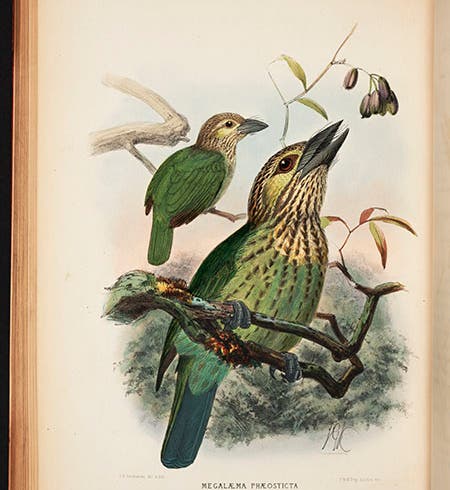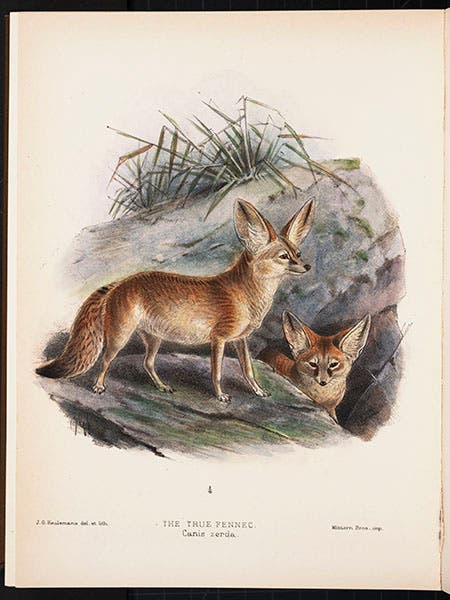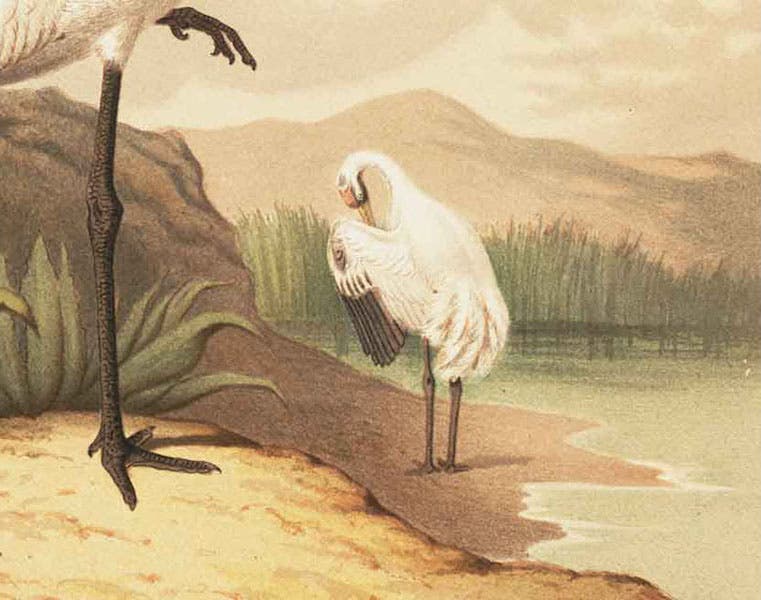Scientist of the Day - Johan Keulemans
Johan Gerard Keulemans, a Dutch illustrator, was born June 8, 1842. Keulemans moved to London in 1868 and almost immediately became one of the most sought-after zoological artists for a new wave of natural history books that was beginning to appear. After the publication in the first half of the century of general works such as John James Audubon’s Birds of America or John Gould’s Mammals of Australia, naturalists were now beginning to issue more focused monographs, such as Charles and George Marshall’s Monograph of the Capitonidae, or Scansorial Barbets (1870-71), St. George Mivart’s Dogs, Jackals, Wolves, and Foxes: A Monograph of the Canidae (1890), or Frans Blaauw’s A Monograph of the Cranes (1897). We happen to have all three of these works in our History of Science Collection, and all were illustrated with lithographs by Keulemans.
Keulemans’ lithographs of the 1870s are different in tone and effect from those of the 1890s, because the later ones are printed in color and have a more matte appearance, but the earlier ones, such as those showing the beautiful barbets, are hand-colored and quite spectacular, as you can see for yourself. Our first two images, from the book by the Marshalls of 1870-71, show the Cochin green barbet and the crimson breasted barbet, with the third image providing a detail of the second. These are hand-colored lithographs.
The fourth image is from Mivart’s book on the Canidae of 1890 and depicts a fennec. The fifth image is a printed chromolithograph from Blaauw’s book on cranes of 1897, and shows the American crane; the last image is a detail of this. The two details allow a comparison of a hand-colored lithograph and a chromolithograph. You gain a lot in speed and volume when you print in color, but, as you can see, you lose the vibrant intimacy of the hand-colored illustration. We exhibited all three of the works discussed here in our 2013 exhibition, Crayon and Stone: Science Embraces the Lithograph, which is not available online. Dr. William B. Ashworth, Jr., Consultant for the History of Science, Linda Hall Library and Associate Professor emeritus, Department of History, University of Missouri-Kansas City. Comments or corrections are welcome; please direct to ashworthw@umkc.edu.











